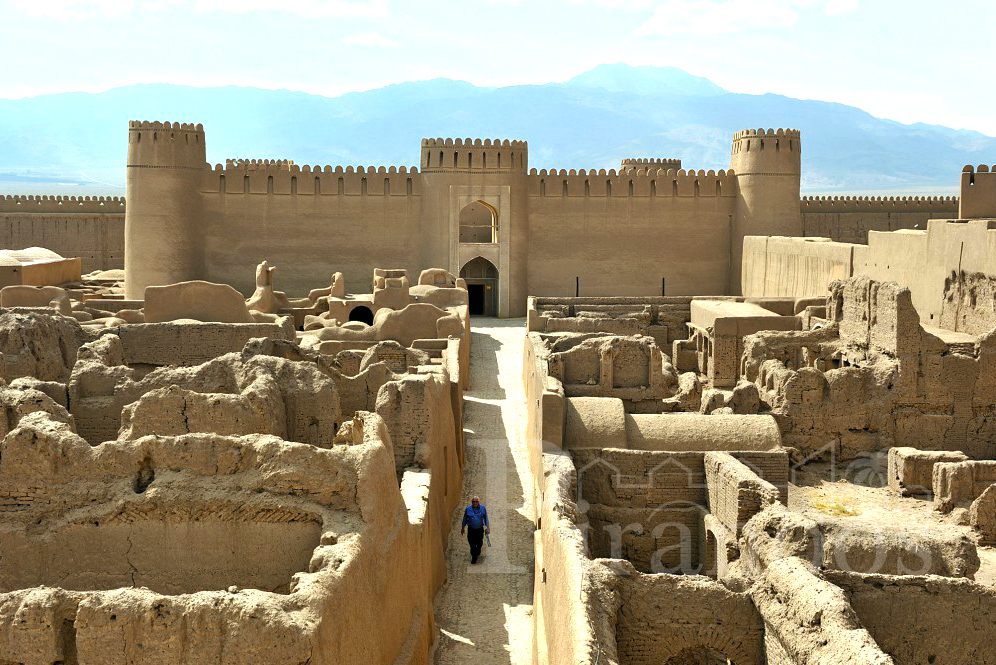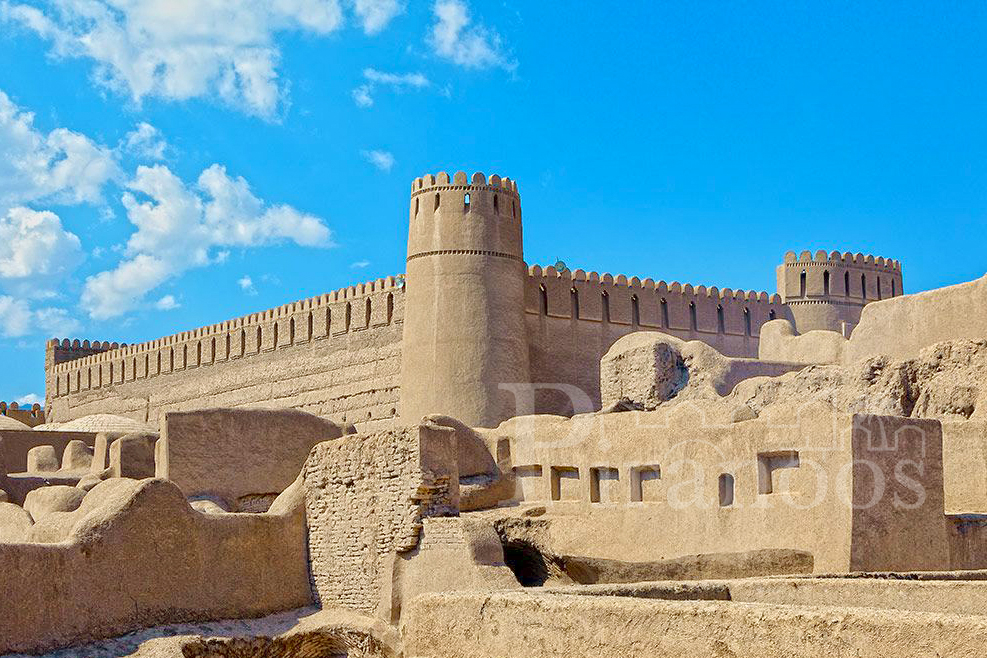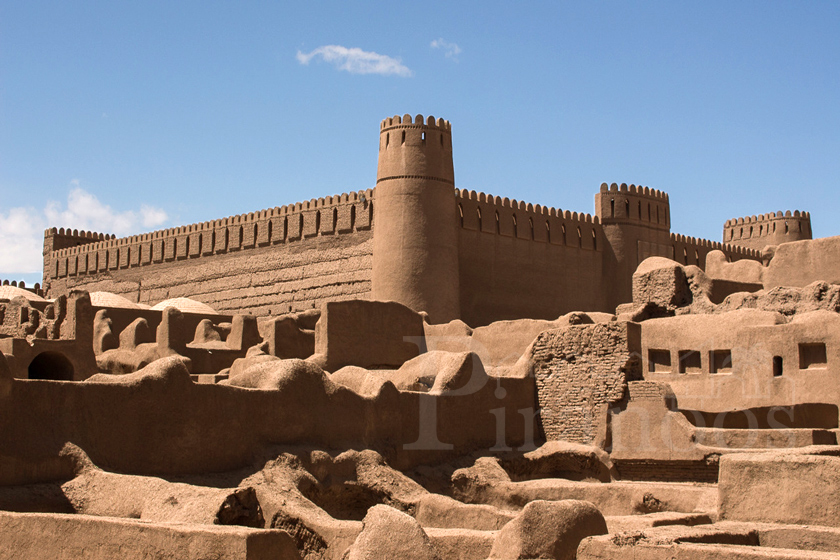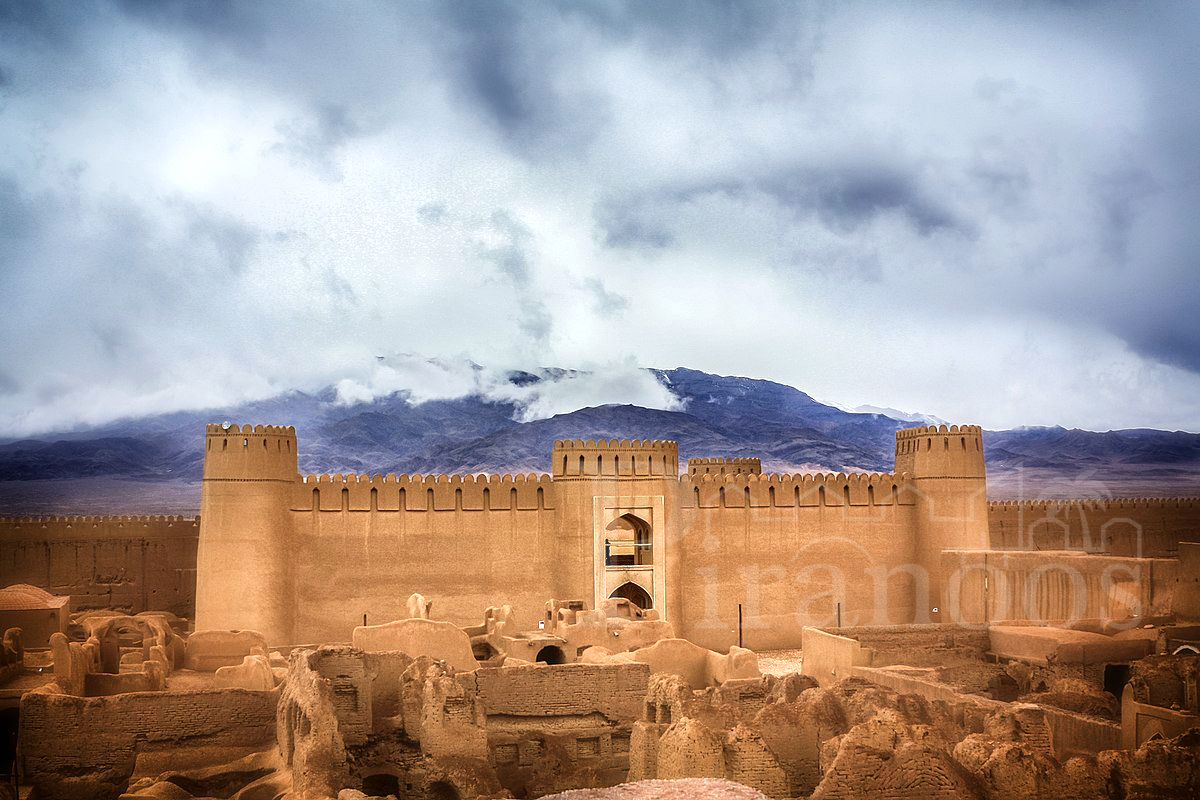A province with so many historical monuments and natural attractions; the Lut Desert with its spectacular scenery, the Kalut Shahdad Desert and unparalleled and beautiful wildlife make Kerman unique and special among the Iran’s southern provinces. A province that attracts many tourists and travelers each year and fascinates everyone with its amazing history and nature.
The most important ancient monument of the Sassanid period is Rayen Citadel or Castle. Located in Kerman Province, this beautiful castle is the second largest adobe building after the Arg-e Bam. With its thousands of years of history, this Arg or castle has attracted so many Iranian and foreign tourists. This area had a great situation due to being located on the west-east highway and Kerman route to Jiroft and Bandar Abbas and so became one of the main centers of trading and business over time. Rayen Citadel has witnessed many historical events. This amazing castle existed during the reign of Yazdgerd III and rescued its inhabitants from the Arab invasion and during the reign of Nader Shah Afshar, this citadel was owned by one of his commanders.

Rayen Citadel is an adobe monument with an area of over 20,000 square meters and its architecture is very similar to the Arg-e Bam. Ruined and destroyed by natural and human factors in the past, the Castle has been rebuilt and refurbished several times. Rayen Citadel of Kerman is known as an impenetrable castle. No army could ever pass through its gates and it remained impenetrable in all wars and attacks during its history.

Built entirely of raw clay, the castle has only one entrance to its east side, which leads to the courtyard by a large and magnificent gate. Like all citadels in Iran, Rayen Citadel has two separate parts for the rich and the folk, and includes sections such as the Zurkhaneh (a traditional Iranian gym originally used to train warriors in ancient Iran), the school, the barracks, the dock, the quarantine building, the mosque, the cellar, and the stables. The citadel also has other parts, such as the guard section near the entrance gate where guards used to monitor and control people’s entry and exit. The entrance of the castle was also where the blacksmiths and knife makers used to work.

The various social classes in this citadel lived in different neighborhoods depending on their occupation and economic and social status. To keep Rayen Castle safe, four eleven-meter watchtowers were built around it, as well as artificial ditches protecting the south part of citadel from enemies. Twelve towers inside the citadel also helped its security. Even to ensure the health of its residents, the citadel was intended to quarantine newcomers so that the sick people would not be able to get inside.

One of the noteworthy and interesting things about Rayen Castle that distinguishes it from other similar historical monuments is that about 5,000 people lived there until 150 years ago. But then the citadel gradually became desolated and the houses were destroyed. In 1995, the Cultural Heritage Organization of Iran decided to revive the former glory of the castle and restore the old structure. As a result, the restoration project has begun and various parts have been rebuilt so far.
Walking down the alleys of this great citadel (Arg) you can still smell the clay and dirt from its walls and imagine yourself as a resident of a 1500-year-old Arg which was never conquered by any king or army in history. To see this magnificent citadel you can go southwest of Kerman city (about 100 kilometers to Kerman-Jiroft road) and from there you reach Rayen and its glorious historical citadel.